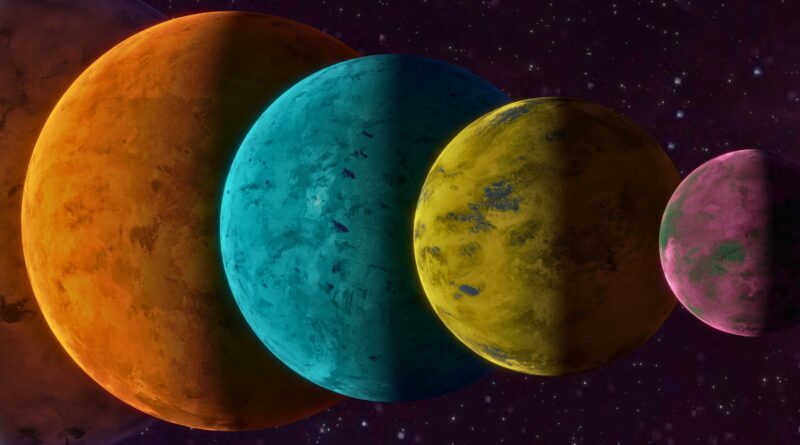5 Amazing Insights: How Ionic Liquids on Exoplanets Could Revolutionize Habitability
For decades, scientists have equated habitability with the presence of liquid water. According to NASA, the “habitable zone” around a star is defined as the region where liquid water could exist on a planet’s surface. However, new research is challenging this water-centric paradigm.
Ionic Liquids on Exoplanets: A New Frontier for Life
Scientists define ionic liquids as salts that are liquid at unusually low temperatures because their molecules consist entirely of charged ions. Unlike water, ionic liquids have almost zero vapor pressure, so they do not readily evaporate even at high heat.
The MIT-led team demonstrated in laboratory experiments that familiar planetary ingredients—sulfuric acid and nitrogen-containing organic compounds—can react to form ionic liquids. For example, when they mixed sulfuric acid (a major component of Venus’s clouds) with an organic acid such as glycine and allowed it to evaporate, a stable ionic liquid residue remained.
Key Characteristics of Ionic Liquids on Exoplanets
-
Exotic solvents: Ionic liquids remain liquid at very high temperatures and extremely low pressure, unlike water.
-
Formation from planetary materials: Experiments showed that mixing sulfuric acid with organic molecules produces ionic liquids when the acid evaporates.
-
Extreme stability: Ionic liquids have negligible vapor pressure and can persist in conditions far beyond liquid water’s limits.
-
Potential for life: These liquids can dissolve biomolecules like enzymes and proteins, so they could serve as a medium for biochemical reactions.
The team behind the study reports that ionic liquids remained liquid under conditions as extreme as nearly 180 °C at very low pressure. In practical terms, this suggests that on a hot, thin-atmosphere exoplanet, small pools of ionic liquid could survive where water would instantly boil or freeze. The researchers envision a world warmer than Earth that doesn’t have water, but where volcanic sulfuric acid flows over patches of organic material, leaving behind pools of ionic liquid as the acid evaporates.
Why This Discovery Matters
Life as we know it requires a liquid medium. On Earth, that medium is water. The new study argues that instead of focusing strictly on water, scientists could consider any liquid that can support metabolism. In other words, worlds once considered uninhabitable might still hold the key to life.
For life to use an ionic liquid as its solvent, the liquid must be able to dissolve and sustain biomolecules. The researchers found that ionic liquids can dissolve enzymes and other biologically relevant molecules, meaning key biochemical reactions could, in principle, proceed in these fluids. Moreover, because their vapor pressure is nearly zero, even tiny droplets of ionic liquid would remain stable on a planet’s surface. If such droplets collected in rock crevices or under mineral crusts, they could be shielded from harsh cosmic radiation, potentially allowing life to persist in these exotic pockets.
How Do Ionic Liquids Form on Planets?
The idea of ionic liquids on exoplanets emerged from an unexpected laboratory finding. While simulating conditions in Venus’s atmosphere, the MIT team mixed sulfuric acid with organic compounds and gently evaporated the acid. They noticed that after nearly all of the sulfuric acid boiled away, a layer of liquid always remained. Chemical analysis showed this residue was not pure acid but an ionic mixture—an ionic liquid.
To test this, the team conducted dozens of experiments with different compounds. They mixed over 30 nitrogen-containing organic molecules (such as amino acids and amines) with concentrated sulfuric acid under a variety of temperatures and pressures. They even applied these mixtures onto basalt rock samples to mimic a rocky crust. In nearly every trial, once the excess acid evaporated, a drop of ionic liquid was left behind. This shows how robust the chemistry is and how likely it could occur naturally on rocky planets.
Implications for Exoplanet Research
The notion of ionic liquids on exoplanets opens up thrilling possibilities. If these exotic liquids can exist, astronomers may start considering a whole new class of planets as potential habitats. Instead of only targeting Earth-twins or icy moons, researchers might focus on hot, rocky super-Earths or Venus-like worlds that have trace organics and active volcanism. Future telescopes, like the James Webb Space Telescope and upcoming Extremely Large Telescopes, could look for chemical signs of sulfuric acid or organic molecules that hint at this unusual chemistry.
This concept broadens the traditional habitable “Goldilocks zone.” Planets once dismissed as too hot or having thin atmospheres might still harbor tiny life-friendly liquids. As Sara Seager notes, this discovery has “opened up a Pandora’s box” of new astrobiology questions. It’s a paradigm shift from “life needs water” to “life needs a suitable liquid,” wherever it may be found.
The full study was published in the journal Proceedings of the National Academy of Sciences.

